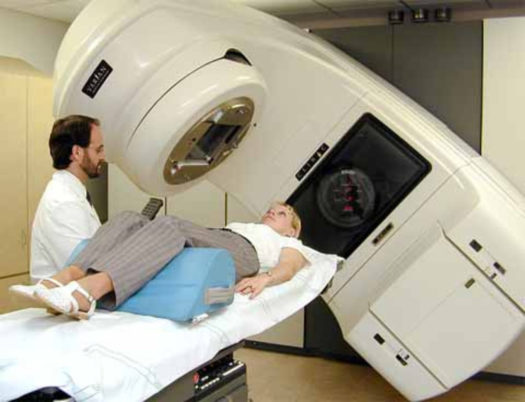
Cancer is a disease in which abnormal cells divide without control and are able to invade other tissues.
Few things strike fear into people more than the word cancer, and with good reason. While improvements in cancer therapy and advances in palliative care mean that the illness does not always lead to inevitable and painful death as it once did, approximately one in three of us will get some form of cancer in our lifetime.
Cancer accounted for about three in ten deaths (over 42,000) in Australia last year. It was the second most common cause of death after cardiovascular disease. Aside from the obvious personal cost, cancer is expensive, with direct costs to our national health system running at $3.8 billion a year.
The US National Cancer Institute defines cancer as a disease in which abnormal cells divide without control and are able to invade other tissues.
Our bodies contain over 200 different types of cell, the basic units of life. Each of these has specific functions and is organised into the various organs such as the lungs, liver, skin, and brain. To keep these organs functioning, cells grow and divide to replace other cells as they age and die.
The exquisite balance between cell growth and death is normally kept under tight control by an incredibly complex genetic network. Mutations in the DNA of genes controlling the network can disrupt this balance, causing an accumulation of excess cells, which forms a tumour.

Chemotherapy works by targeting rapidly dividing cancer cells with toxic chemicals.
If a tumour forms in an essential organ, such as the liver or lungs, it may eventually grow large enough to compromise organ function and kill us. But some of the most common cancers occur in organs that aren’t necessary to keep us alive, such as breasts and prostate. Here, the real problems usually arise when cells from the primary tumour spread (metastasise) to form secondary tumours in essential organs.
It’s staggering to think that a mutation in any one of the 100 trillion or so cells in our body is all it takes to initiate a tumour. Cancer-causing mutations can be inherited, or induced by infection with bacteria or viruses (HPV and HIV), or environmental factors, such as smoking, asbestos and radiation.
But most mutations probably occur as the result of unrepaired DNA damage that is a consequence of normal cell metabolism.
Complexity is one of the most challenging aspects of understanding cancer and developing therapies. At the molecular level, this complexity can be reduced to a relatively small number of underlying principles known as the hallmarks of cancer. But the more we learn about cancer at the genetic level, the more we understand that each person’s disease is unique.
In other words, cancer is not a single disease. Over 100 different types of cancer have been described using anatomical classifications – that is, by the organ or cell type in which they originate (such as prostate cancer, bowel cancer, breast cancer, skin cancer and lung cancer). But common molecular features (such as a particular genetic signature) are emerging as a much more powerful way to determine appropriate treatment.
This paradigm shift in treatment is being driven by large-scale gene sequencing and functional genomics projects, which are giving us unprecedented insight into cancer at the genetic and molecular level. Australia is at the forefront of this effort, particularly in pancreatic and ovarian cancer genomics.

Radiotherapy works by targeting rapidly dividing cancer cells with radiation.
By far the strongest risk factor for cancer is age. Put simply, the older you get, the better your odds of getting cancer. A long list of genetic and environmental risk factors have been identified for various cancer types, but many of these have relatively moderate effects. Family history is also a predictor of cancer risk but discrete inherited mutations (such as BRCA1) have only been linked to a relatively small number of cancers. Obesity is emerging as a common risk factor for several cancers.
Cancer prevention efforts have largely been elusive, with the notable exceptions of the HPV vaccine (for cervical cancer), and reduced smoking rates (for lung cancer).
Until recently, the three pillars of cancer treatment have been surgery, radiation and chemotherapy. The simple aim of all three is to reduce tumour mass.
The first report of cancer being cured by surgery appeared in 1809, and it remained the only effective tool available through the first half of the 20th century. Radical mastectomy for breast cancer – still one of the most profound influences on cancer surgery – was first performed in 1894. Radiation treatment was first shown to cure head and neck cancer in 1928.
Radiotherapy and chemotherapy both work by targeting rapidly dividing cancer cells with radiation or toxic chemicals, respectively. But side effects arise when normal, healthy cells are inadvertently targeted. The cells lining the gut, for instance, and hair follicles are also rapidly dividing and often the victim of collateral damage.

Newer therapies for cancer are designed to specifically target molecular abnormalities related to the hallmarks of cancer.
More recent developments in therapy have come in the form of immunotherapy, which uses antibodies or stimulates parts of the immune system to help fight the growth of tumours, and newer therapies designed to specifically target molecular abnormalities related to the hallmarks of cancer. Notable examples of these include Herceptin for the treatment of breast cancer, and Gleevec (Imatinib) for the treatment of some types of leukemia.
There are myriad misconceptions about the risk factors for cancer, and no shortage of snake-oil salesman flogging unproven cures to desperate patients. Everything from coffee enemas to an alkaline diet has been touted as a cure. Cancer Council Australia has a great website that uses hard evidence to dispel many of the myths and misconceptions about cancer.
The best news is that we’re starting to beat this disease. And for some cancer types, such as testicular cancer and specific kinds of leukemia, we can effectively treat most cases.
Five-year survival across all types of the disease has increased markedly in the last 20 years (from 47% in 1982-87 to 66% in 2006-10) but these gains have not been consistent across all cancers. Australians generally have better cancer survival prospects compared with people living in other countries. But unfortunately, there are still inequalities for Aboriginals, people living in remote areas and people of lower socioeconomic status.
Further advances in screening, diagnostics, and targeted therapeutics are likely to continue pushing cancer survival rates even higher. The emergence of personalised medicine has the potential to completely change the way cancer is treated, and there is a rapid push towards this approach, even in the face of the very expensive price tag.
But what of the elusive cure? It’s likely that we’ll turn cancer into a disease that is managed and treated as a chronic disease, so that people will die with, rather than from, cancer.
Written by Darren Saunders, Laboratory Head, Garvan Institute and published by The Conversation ~ March 15, 2013.
FAIR USE NOTICE: This site contains copyrighted material the use of which has not always been specifically authorized by the copyright owner. We are making such material available in our efforts to advance understanding of environmental, political, human rights, economic, democracy, scientific, and social justice issues, etc. We believe this constitutes a ‘fair use’ of any such copyrighted material as provided for in section 107 of the US Copyright Law. In accordance with Title 17 U. S. C. Section 107, the material on this site is distributed without profit to those who have expressed a prior interest in receiving the included information for research and educational purposes. For more information go to: http://www.law.cornell.edu/uscode/17/107.shtml“
